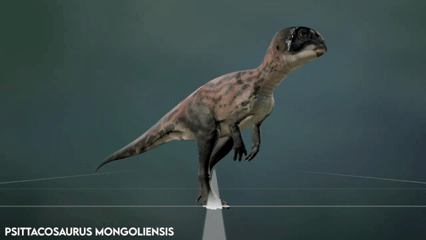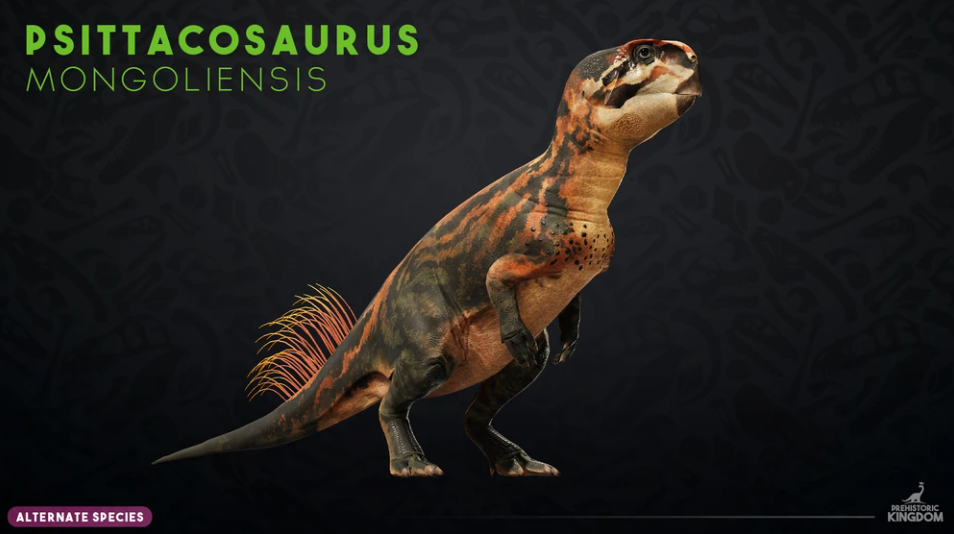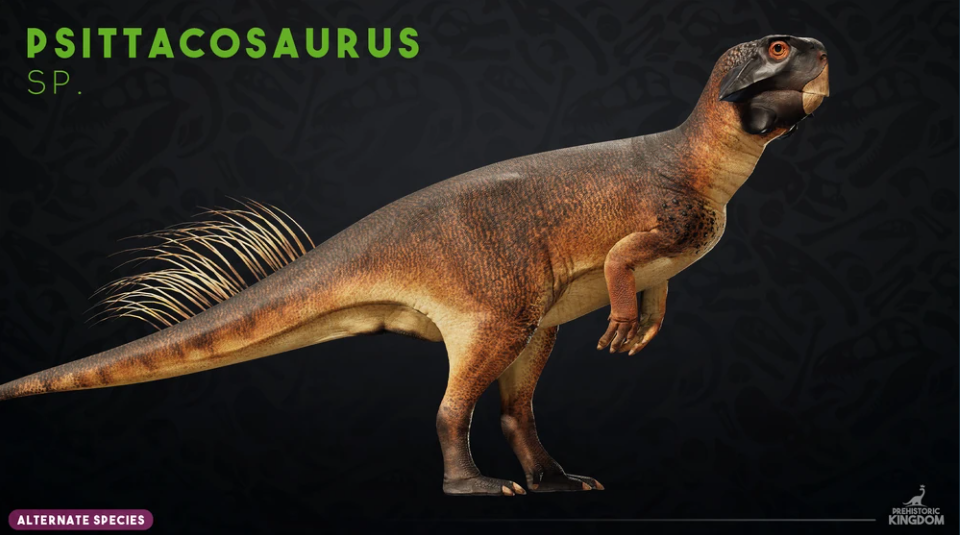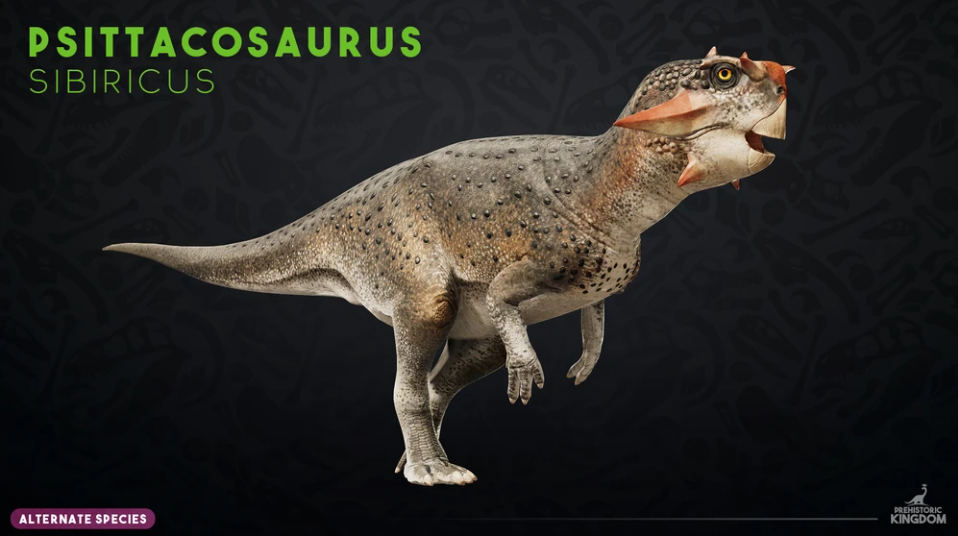Psittacosaurus
Sit-tah-coe-sore-usName meaning: Parrot Lizard
Time Period: Barremian through to the Albian (Early Cretaceous) 125-105 mya
Locations: China/Mongolia/Russia/Thailand-maybe
Taxonomy: Ornithischia-Ceratopsia-Psittacosauridae
Subspecies: P. mongoliensis P. sinensis P. xinjiangensis P. meileyingensis P. sattayaraki P. sibiricus P. lujiatunensis P. major P. gobienss P. amitabha
Characteristics ~ ~ ~ ~
Psittacosaurus is a small ceratopsian dinosaur. Juvenile Psittacosaurus are actually very common with almost just as many juveniles known as adults. Psittacosaurus grew very quickly throughout the first 4 four years before slowing down, reaching sexual maturity around 7 and reaching their max size at around 9. Juveniles were also born quadrupedal and as they aged their legs grew larger and faster than their arms becoming bipedal. They also had these weird bits of patagium like skin on the back of their legs that may have helped them swim. Psittacosaurus has been preserved with hair-like bristles growing from the back of its tail; these bristles are strange, they seem too specific to not serve a purpose. Psittacosaurus is one of the only known feathered ornithischians leading to speculation that other marginocephalians (ceratopsians and pachycephalosaurs) may have had structures like these. Psitacosaurus has been found with many rarely preserved traits cloaca, Belly button and melanosomes or color molecules. These reveal that the colors Psitacosaurus had were mostly brown with counter shading and darker colors around the head. Psitacosaurus had a larger brain and more advanced senses than larger ceratopsians as when they grew larger they relied less on being quick and adaptive. Psitacosaurus had to worry about mammals, dromaeosaurs troodontids and crocodilians across most of it’s habitats. Psitacosaurus mostly ate low growth vegetation like ferns using its sharp parrot-like beak to slice off bites and using gastroliths in its stomach to digest and chew the food. Psitacosaurus does have Jugal (cheek) horns Psittacosaurus survived for 20 million years, a remarkably long time for one genus going extinct because of climate change, competition from larger herbivores and angiosperms replacing its favored plants.

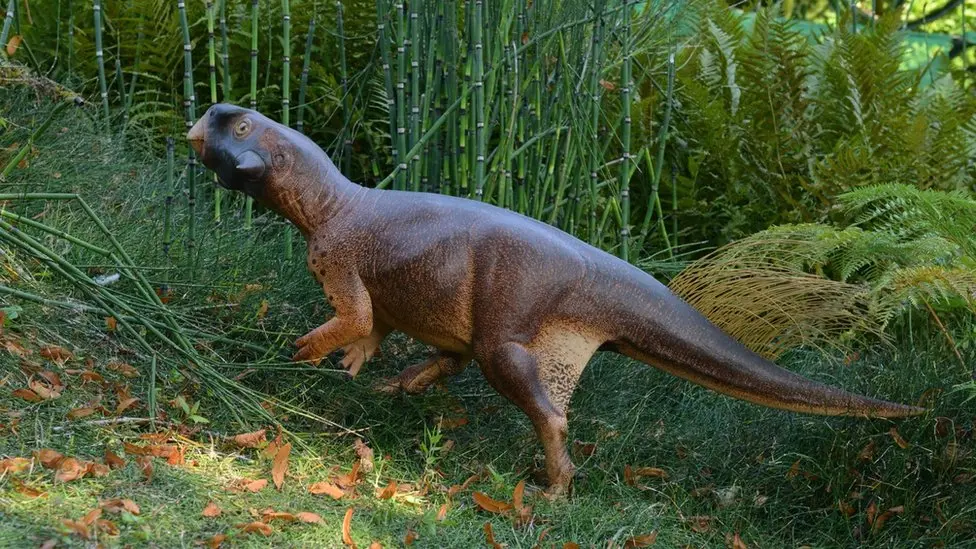
History & Fossils ~ ~ ~ ~
Psittacosaurus was first found in 1922 by Henry Fairfield Osborn in the Third Asiatic Expedition of the American Museum of Natural History. On that expedition the First Psittacosaurus P. Mongoliensis was discovered as well as another similar dinosaur named Protiguanodon. Psittacosaurus was initally thought to be an ankylosaur and Protiguanodon was thought to be an iguanadontid. It would later be corrected over time that Psittacosaurus was a ceratopsian and that Protiguanodon was synonymous with Psittacosaurus Mongoliensis. There is too much to cover about the history of Psittacosaurus, but it has 10 currently valid species 17 had been named in total. Most can be identified by their size and configuration of horns. And there have been many of the greatest fossils ever found associated with this animal.


Psittacosaurus V.S Repenomamus A Repnomamus, an early mammal relative, has been found with a partially digested juvenile Psittosaurus skeleton within its stomach. Another Fossil in 2023 has preserved a fight to the death between a Repenomamus and Psitacosaurus before they were covered by a volcanic flow. This fossil is extraordinary practically every bone is preserved which is an absolute rarity. This fossil is rarely ever mentioned likely because of its newness, but also because of the fighting dinosaurs fossil between Protoceratops and Velociraptor
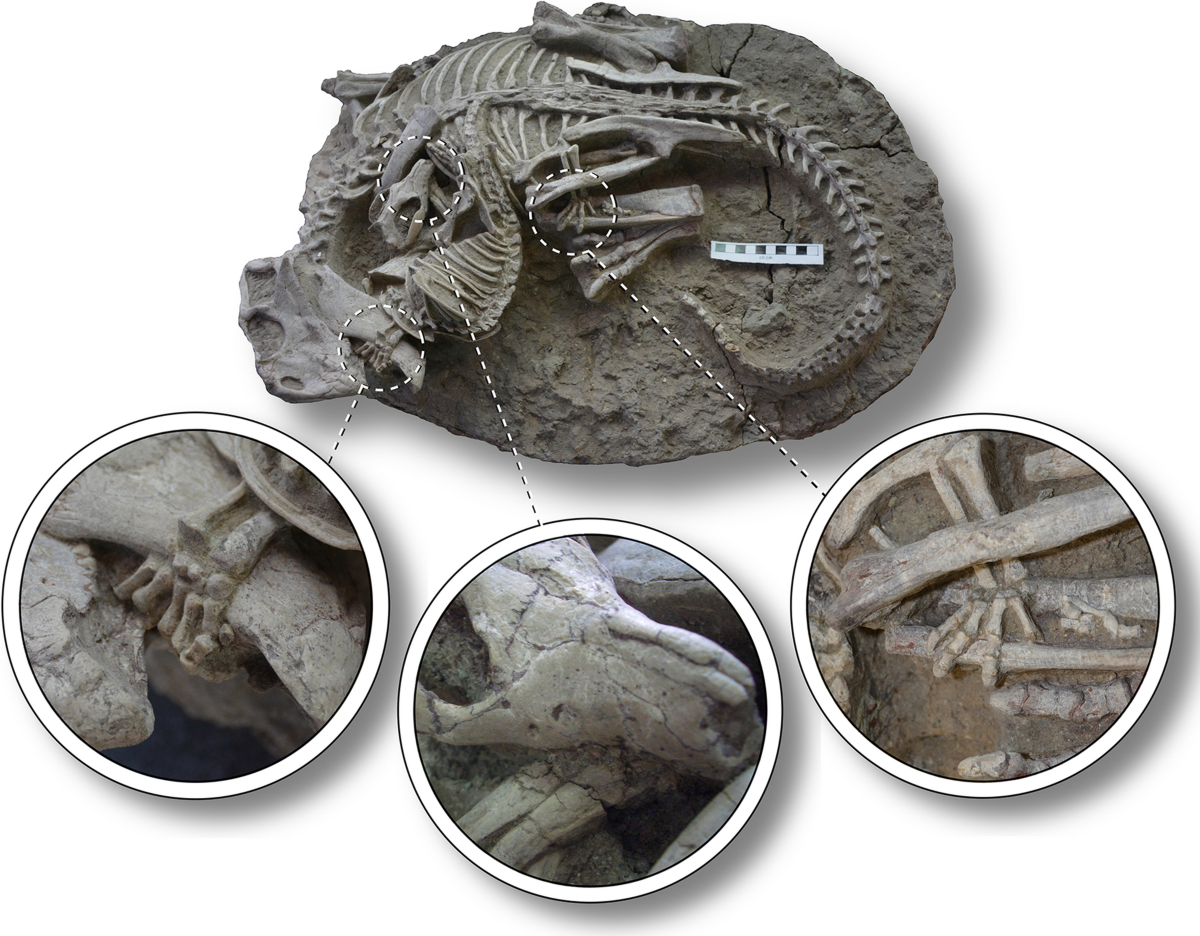
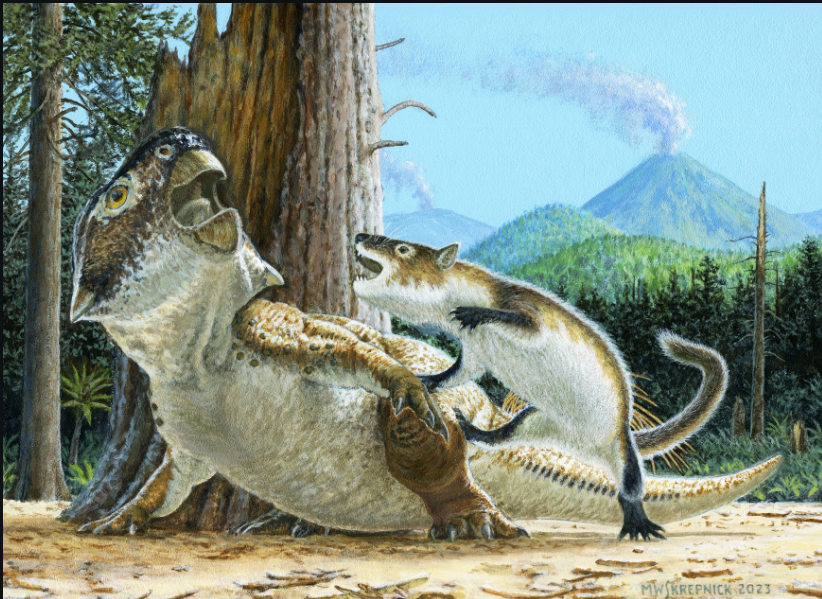
Psittacosaurus Nest Inside are 34 young Psittacosaurus, all around 6 inches in size. Found in Northeastern China's Liaoning province. Along with the skull of a 6 year old sub adult with no body, it may be unrelated, having been placed there by someone trying to increase its sale value. But if not that means this Psittacosaurus must have risen up to the challenge of babysitting the young before the nest suddenly collapsed and buried them.
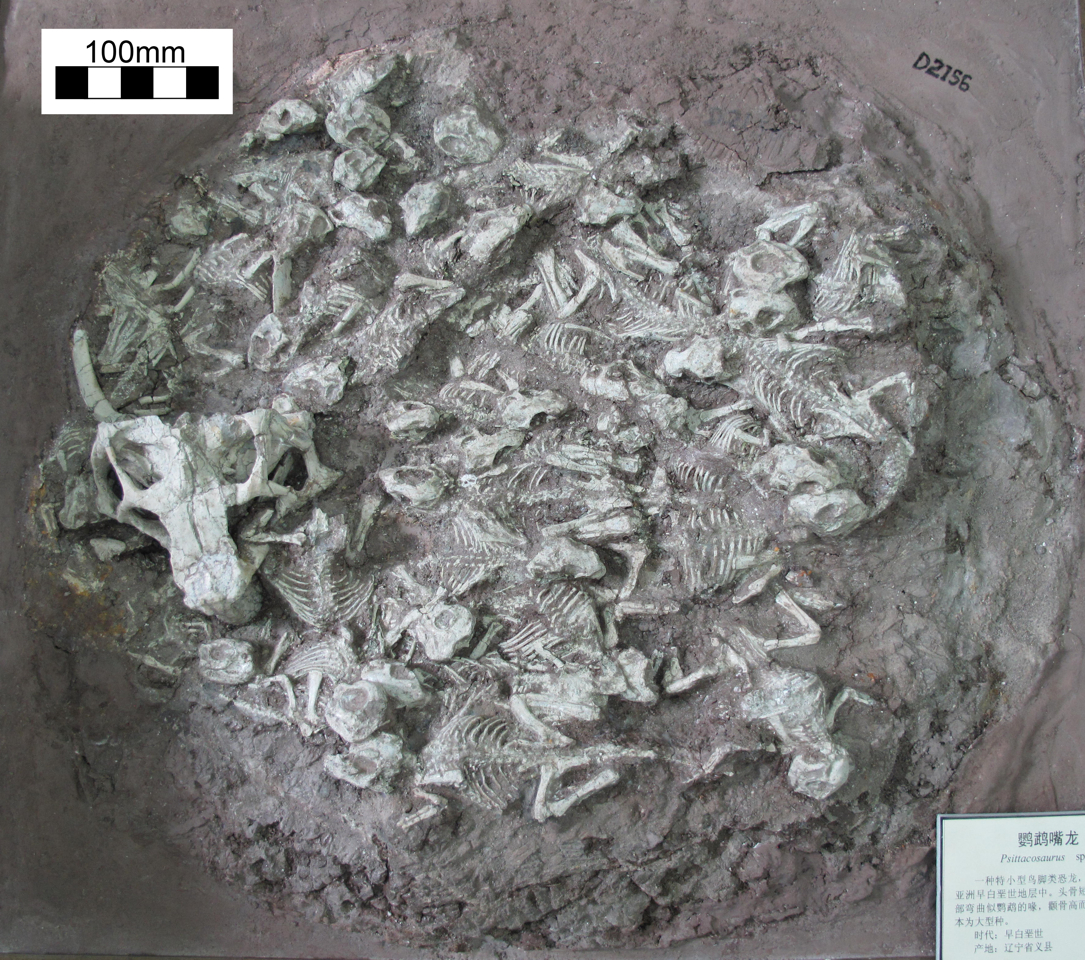


Media Deptictions ~ ~ ~ ~
